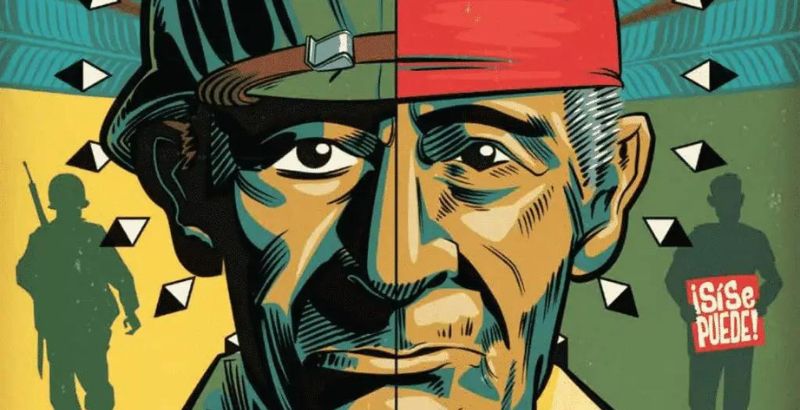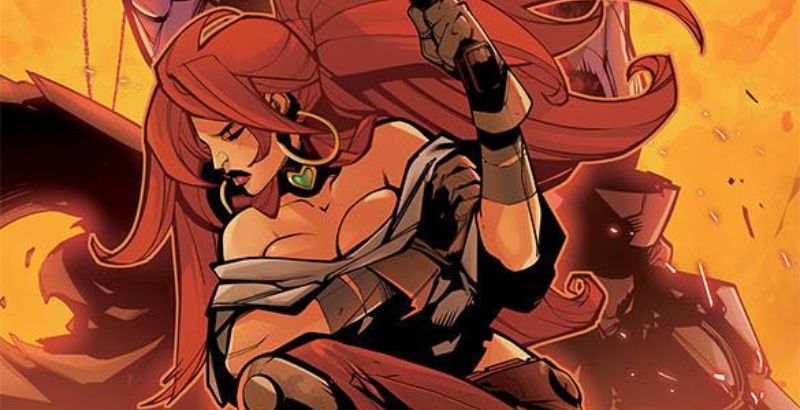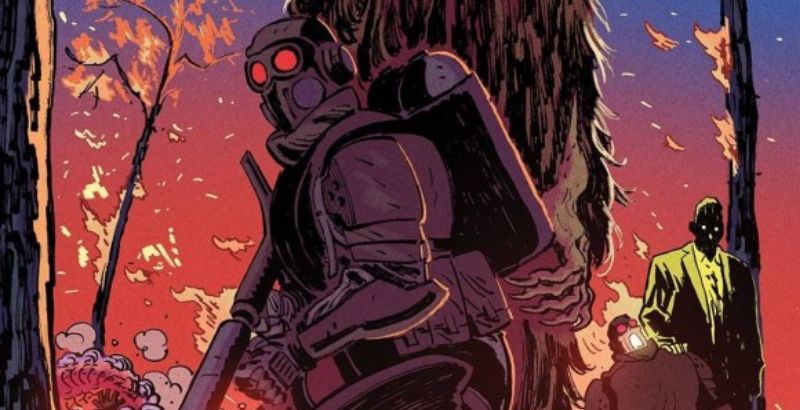
The forward to this graphic novel is written by Frederick Luis Aldama, Ph.D., of Ohio State University and drives home the importance of works like La Voz de M.A.Y.O: Tata Rambo and the role they play in correcting the erasure of Latinx and Chicanx history in the United States. Comics are tools that can be used to tell our stories, take back our space in the country, and teach those who don’t understand the struggles and history of people of color. When history books erase us, a graphic novel can tell our story. In the vein of Persepolis and March, La Voz de M.A.Y.O. stands to open the hearts and eyes of readers, and the fact that it is now published by Top Cow, an imprint of Image Comics, a well-known comics publisher, helps ensure a wider release.
Written by Henry Barajas, with art from J. Gonzo, and lettering from Bernardo Brice, La Voz de M.A.Y.O is an oral history of Ramon Jaurigue. Known to Barajas, his great-grandson, as Tata, the graphic novel covers Ramon’s life from orphan to WWII veteran to the co-founder of the Mexican, American, Yaqui, and Others (M.A.Y.O.) organization. M.A.Y.O. was so influential because it successfully lobbied the Tucson City Council to improve living and working conditions for members of the Pascua Yaqui tribe—paving the way to their federal recognition.
The opening of the graphic novel showcases the story of Rosa Robles, the woman who sought protection from deportation in a Tucson church. By opening with her story and the protest outside the church, Barajas sets the tone for the rest of the book as an exploration of Tata’s life and activism. In fact, the title of the graphic novel came from the title of the M.A.Y.O newsletter which was used as a call to action for the community. In many ways, this book is also a call to action for us now, even as it serves as a vital retelling of American history.
La Voz de M.A.Y.O teaches readers about Ramon, but it also uses time shifts from the past to the present to showcase the importance of the story. Not only do the time shifts work to make sure that readers understand how deep the oral history runs and how it hasn’t been preserved, but they also work to draw similarities between the issues the Latinx and indigenous communities are going through across the United States.
Every page of La Voz de M.A.Y.O hit me like a truck. Barajas continually reminds the readers of the erasure of people of color, and in this book’s case, specifically Latinx from the nation’s history. From our contributions to military campaigns, to our fight to be resected, La Voz de M.A.Y.O is a vital story, especially since it centers on the Yaqui in Arizona and their fight to not only be recognized by the U.S. government but also to keep their land.
Too often do we refuse to acknowledge that while Latinx in this country have struggled, those others who are also indigenous have struggled more. La Voz de M.A.Y.O highlights this not only by retelling a history of activism but also a history of oppression and systemic abuse which led the Pascua Yaqui tribe to endure high levels of substance abuse, minimal housing built from materials found in the dumps, and, of course, the fear of being pushed off of their own land.
La Voz de M.A.Y.O doesn’t only show the dark moments on the Rez, it also shows the sad realities of Ramon’s life. While Ramon co-founded M.A.Y.O, helped establish a community free clinic to serve the community, and was pivotal in the Pascua Yaqui tribe receiving recognition, it came at a price. The graphic novel not only tells of Ramon’s activism but also his infidelity and how he chose the wider community over his own family.
Truthfully, I cried within moments of reading the opening pages of La Voz de M.A.Y.O. I sobbed as I went from page to page because Tata reminded me of my own welo. Tata reminded me of my grandfather who fought in WWII and was never acknowledged; the man who taught me to fight; the man who picked cucumbers when he was seven years old; the man who raised me and taught me about the Chicano Civil Rights Movement and made sure that I didn’t forget my history. But just like Tata Ramon, the world forgot my welo.
The art is simple but reminiscent of the art from the Chicano Civil Rights Movement. It’s emotional in its coloring and the expressions shown on the characters’ faces. The color palette leans on primary colors like screen printed posters and calls to action.
La Voz de M.A.Y.O is a must-read graphic novel. It tells an important story, writing M.A.Y.O back into the history of Arizona and of the U.S. By including original newsletters from the organization in the closing pages, Barajas allows you to read the history yourself in tandem with his retelling of his Tata’s history. This is a graphic novel that should be taught in history courses at all levels; it’s a piece of history to read on your own and it’s a story to share and keep alive.
La Voz de M.A.Y.O: Tata Rambo is available where comic books are sold.
La Voz de M.A.Y.O: Tata Rambo
TL;DR
La Voz de M.A.Y.O is a must-read graphic novel. It tells an important story, writing M.A.Y.O back into the history of Arizona and of the U.S. By including original newsletters from the organization in the closing pages, Barajas allows you to read the history yourself in tandem with his retelling of his Tata’s history.







